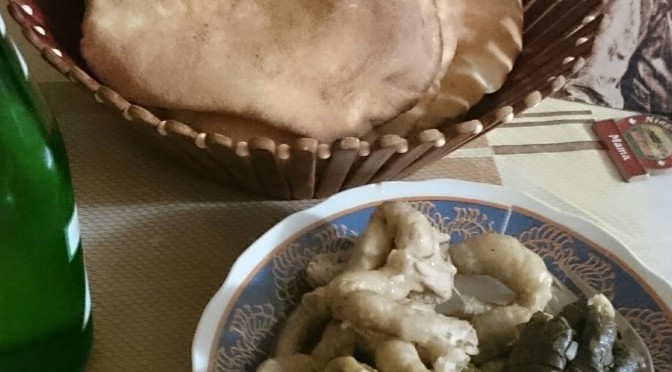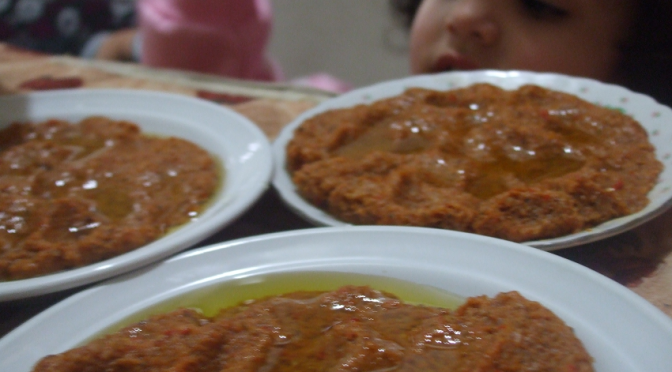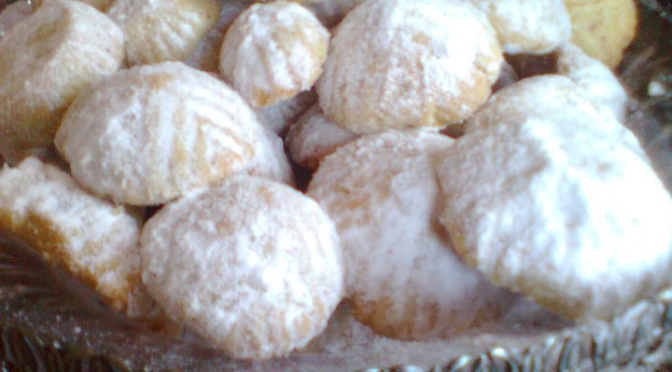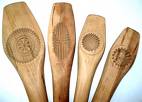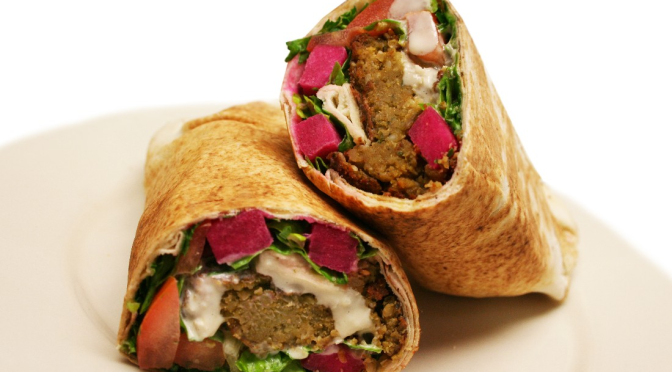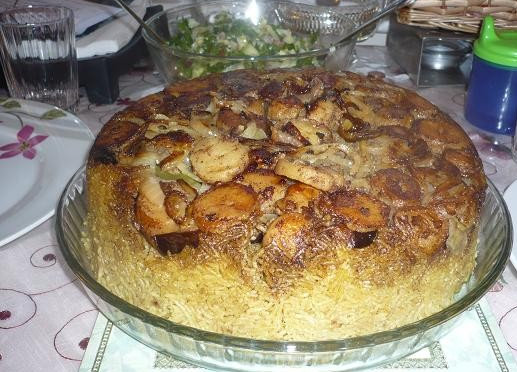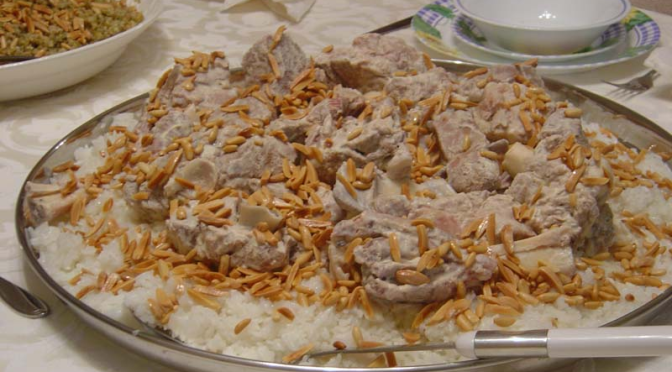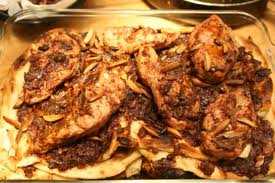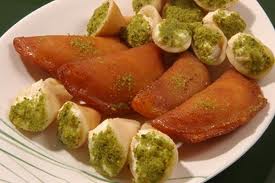

In Palestine, musakhan is a favorite dish amongst Palestinians. The dish is simple to make and the ingredients needed are easily obtainable, which may account for the dish’s popularity. Many of the ingredients used: olive oil, sumac and pine nuts, are widely grown on Palestinian land and frequently found in many forms of Palestinian cuisine.
Musakhan is a dish that one typically eats with one’s hands. It is usually presented with the chicken on top of the loaf, and could be served with soup. The term ‘musakhan’ literally means “something that is heated.”
Palestinian sumac-scented roast chicken
Meltingly tender chicken with the lemony flavor of sumac and the sweetness of caramelized onions, musakhan (المسخن) is a favorite dish of Palestinians everywhere. Sheets of flatbread encase the chicken as it cooks, protecting it from direct heat and soaking up delicious juices. Musakhan is traditionally eaten with the fingers. Sometimes spelled moussakhan or musakhkhan. (via wikipedia)
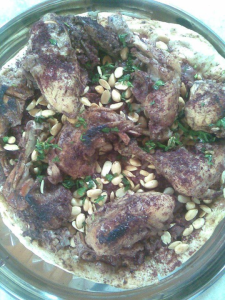
Ingredient
Chicken cut four pieces
Arabic bread
Five warheads onions and chopped large wings
Laurel leaves, cinnamon sticks (to cook chicken)
3 tbsp sumac
mixture for Chicken: 2 age garlic, onions small, salt, teaspoon sumac, 3 tablespoons olive oil, mixture of Lu
(Almonds) fried or pine
Preparation
1. Put the chicken in boiling water with bay leaf and cinnamon sticks until Boil well.
2. Fried onions with olive oil until tender and becomes golden in color and add the chicken and stir with a bite and then we take off the chicken and leave to cool aside.
3. after onion been cooled, we add sumac (Note: put aside a little from onion oil)
4. then we use the chicken boiled water to do chicken mixture with added them in mixture one onion, salt, sumac, olive oil, and lemon juice.
5. we prepare the arabic bread and start to put the chicken mixture and onion oil then we roasted it about 5 min.
6. we take the bread out the oven then we put chicken and put it lil bet in oven then we spread the frised almond and pins on it.
Enjoy!
 Nutritional information
Nutritional information
A typical recipe of Musakhan has the following nutrition facts per serving (around 300g):
- Calories: 391
- Total fat (g): 33
- Saturated fat (g): 7
- Cholesterol (mg): 92
- Carbohydrates (g): 0
- Protein (g): 23
